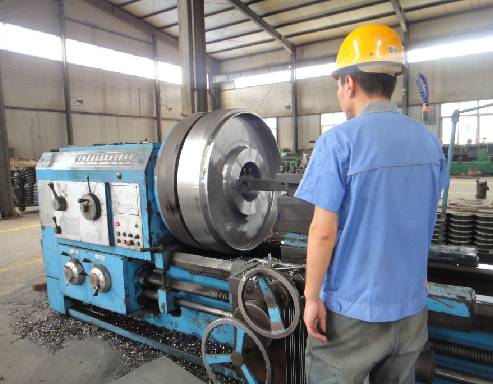 Afrikaans
Afrikaans  Albanian
Albanian  Amharic
Amharic  Arabic
Arabic  Armenian
Armenian  Azerbaijani
Azerbaijani  Basque
Basque  Belarusian
Belarusian  Bengali
Bengali  Bosnian
Bosnian  Bulgarian
Bulgarian  Catalan
Catalan  Cebuano
Cebuano  Corsican
Corsican  Croatian
Croatian  Czech
Czech  Danish
Danish  Dutch
Dutch  English
English  Esperanto
Esperanto  Estonian
Estonian  Finnish
Finnish  French
French  Frisian
Frisian  Galician
Galician  Georgian
Georgian  German
German  Greek
Greek  Gujarati
Gujarati  Haitian Creole
Haitian Creole  hausa
hausa  hawaiian
hawaiian  Hebrew
Hebrew  Hindi
Hindi  Miao
Miao  Hungarian
Hungarian  Icelandic
Icelandic  igbo
igbo  Indonesian
Indonesian  irish
irish  Italian
Italian  Japanese
Japanese  Javanese
Javanese  Kannada
Kannada  kazakh
kazakh  Khmer
Khmer  Rwandese
Rwandese  Korean
Korean  Kurdish
Kurdish  Kyrgyz
Kyrgyz  Lao
Lao  Latin
Latin  Latvian
Latvian  Lithuanian
Lithuanian  Luxembourgish
Luxembourgish  Macedonian
Macedonian  Malgashi
Malgashi  Malay
Malay  Malayalam
Malayalam  Maltese
Maltese  Maori
Maori  Marathi
Marathi  Mongolian
Mongolian  Myanmar
Myanmar  Nepali
Nepali  Norwegian
Norwegian  Norwegian
Norwegian  Occitan
Occitan  Pashto
Pashto  Persian
Persian  Polish
Polish  Portuguese
Portuguese  Punjabi
Punjabi  Romanian
Romanian  Russian
Russian  Samoan
Samoan  Scottish Gaelic
Scottish Gaelic  Serbian
Serbian  Sesotho
Sesotho  Shona
Shona  Sindhi
Sindhi  Sinhala
Sinhala  Slovak
Slovak  Slovenian
Slovenian  Somali
Somali  Spanish
Spanish  Sundanese
Sundanese  Swahili
Swahili  Swedish
Swedish  Tagalog
Tagalog  Tajik
Tajik  Tamil
Tamil  Tatar
Tatar  Telugu
Telugu  Thai
Thai  Turkish
Turkish  Turkmen
Turkmen  Ukrainian
Ukrainian  Urdu
Urdu  Uighur
Uighur  Uzbek
Uzbek  Vietnamese
Vietnamese  Welsh
Welsh  Bantu
Bantu  Yiddish
Yiddish  Yoruba
Yoruba  Zulu
Zulu High-Quality Track Idler Rollers for Optimal Performance
Understanding Track Idler Rollers Essential Components in Heavy Machinery
In the realm of heavy machinery and construction equipment, efficiency and reliability are paramount. One of the critical components that contribute to the smooth operation of tracked machines, such as excavators, bulldozers, and other continuous track vehicles, is the track idler roller. This article delves into the function, types, and maintenance of track idler rollers, recognizing their indispensable role in machinery performance.
What is a Track Idler Roller?
A track idler roller, often simply known as an idler, is a pivotal part of the undercarriage system. Positioned at the front or rear of the track assembly, idlers serve multiple functions they help guide the tracks, support the weight of the vehicle, and absorb shock loads while promoting smoother movement. By maintaining tension in the track belt, idler rollers ensure that the tracks perform effectively, contributing to the overall stability and functionality of the machine.
Types of Track Idler Rollers
Track idler rollers can be classified based on various factors, such as design, material, and application
1. Standard Idler Rollers These are commonly used in various types of machinery, designed to provide reliable performance in standard operating conditions.
2. Heavy-duty Idler Rollers Made from reinforced materials, heavy-duty idler rollers are built to withstand more extreme conditions. They are ideal for heavy excavation or mining applications where additional durability is required.
3. Low-profile Idler Rollers These are designed for compact machinery or applications where space is limited, allowing for efficient operation without compromising performance.
track idler roller

4. Sealed Idler Rollers Equipped with seals to prevent dirt and debris from entering, sealed idler rollers have an extended lifespan and require less maintenance, making them a popular choice in challenging environments.
Importance of Maintenance
Like any mechanical component, track idler rollers require regular maintenance to ensure optimal functionality. Preventative measures can significantly extend the life of these rollers and improve overall machine performance. Key maintenance practices include
- Regular Inspections Routine checks help identify wear and tear, misalignment, or any signs of damage. Early detection can prevent costly repairs down the line.
- Cleaning Keeping idler rollers clean is essential for minimizing friction and preventing excessive wear. Operators should remove dirt, mud, and debris from the rollers and surrounding areas, especially after working in harsh conditions.
- Lubrication Proper lubrication is vital to minimize friction and keep the moving parts functioning smoothly. Operators should refer to the manufacturer’s guidelines for the appropriate type and frequency of lubrication.
- Adjusting Tensions Proper tension in the tracks is crucial for the effective operation of the idler rollers. Regularly checking and adjusting the tension can help prevent premature wear.
Conclusion
Track idler rollers are essential components in the functionality of tracked machinery. Their roles in providing stability, guiding tracks, and absorbing shocks cannot be overstated. By understanding the importance of idler rollers, their various types, and the necessity of regular maintenance, operators can ensure the longevity and efficiency of their equipment. As the construction and mining industries continue to evolve, the emphasis on maintaining equipment performance makes the role of track idler rollers all the more significant. Investing time and resources in their maintenance ultimately leads to increased productivity and reduced downtime, underscoring their value in heavy machinery operations.
-
Revolutionizing Conveyor Reliability with Advanced Rubber Lagging PulleysNewsJul.22,2025
-
Powering Precision and Durability with Expert Manufacturers of Conveyor ComponentsNewsJul.22,2025
-
Optimizing Conveyor Systems with Advanced Conveyor AccessoriesNewsJul.22,2025
-
Maximize Conveyor Efficiency with Quality Conveyor Idler PulleysNewsJul.22,2025
-
Future-Proof Your Conveyor System with High-Performance Polyurethane RollerNewsJul.22,2025
-
Driving Efficiency Forward with Quality Idlers and RollersNewsJul.22,2025





























